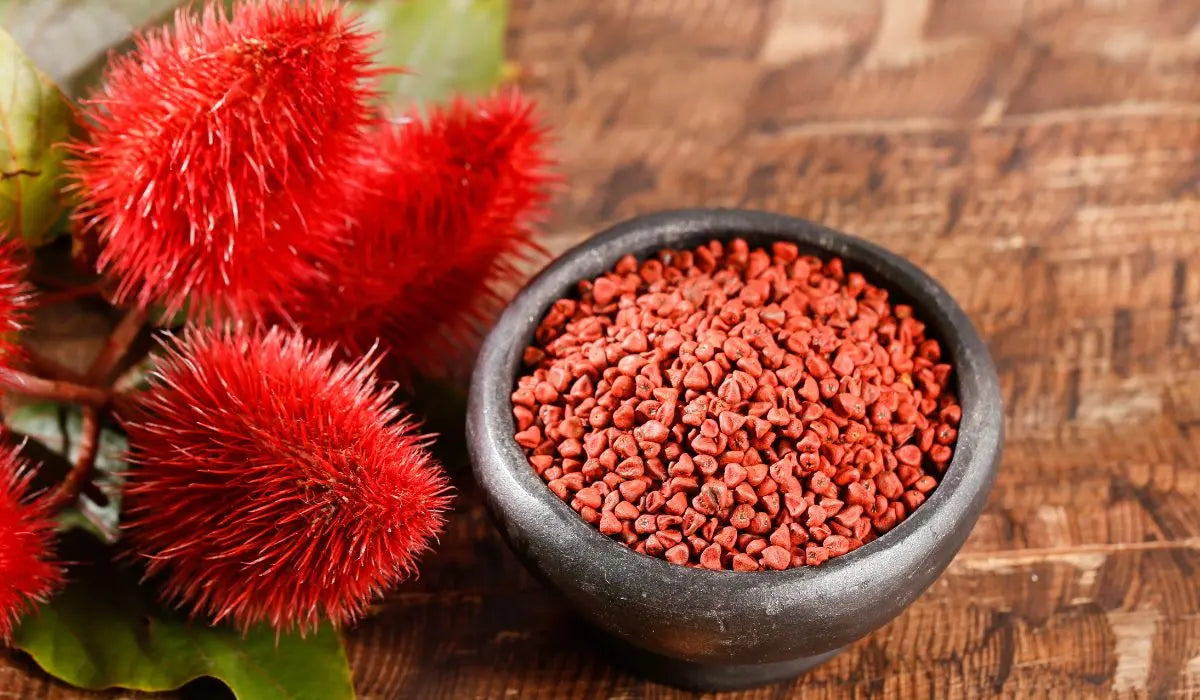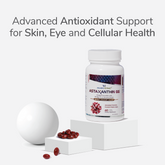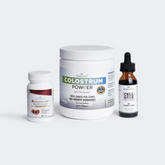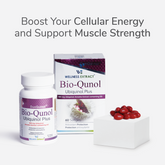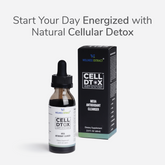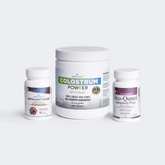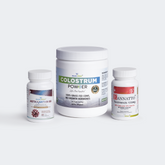Estimated Reading Time: 14 minutes
|Annatto- probably one of the oldest known natural dye plants native to Central and South America. Due to its vibrant, characteristic color, annatto is also called a lipstick plant and, sometimes, poor man's saffron. However, in recent years, the plant has been positively researched for its medical benefits, creating a buzz in medical science.
You might also be wondering: what is annatto, and what are the constituents that make it a revolutionary health trend in modern times?
Here is a complete A-Z guide about annatto, its source, uses, health potential, side effects, and marketplace value in 2025.
The Story of Annatto: From Ancient Tribes to Global Markets
Call it Achiote, Onoto, Atsuete, or Urucum- Annatto goes by many names across the globe. Traditionally, used as a mere coloring dye, in modern days, annatto is also used for its nutritional properties.
Meet Bixa Orellana, a.k.a Annatto Source
Derived from the seeds of the achiote plant, a shrub native to South America, this vibrant red-orange dye has a rich history. The plant is scientifically known as Bixa Orellana, characterized by mature and spiky achiote pods carrying big red seeds. Bixa is the botanical genus, while the specific epithet was named in honor of an early Amazon River explorer, Francisco de Orellana.
Annatto’s Journey Through Time
According to some sources, annatto gained significance in the late 1500s for the first time in Brazil, where it is known as urucum. However, it still lacks relevant proof to validate the accuracy of the fact. The earliest known record of annatto's use in cheese is in a 1743 Dutch Household Diary, Huishoudelyk Woordboek. In modern days, annatto is used in about 70% of natural food additives. But, probably, food coloring wasn't its first use.
Traditionally, annatto is used as body paint, sunscreen, to treat stomach distress, and as an insect repellant. For a thousand years, it has been indigenous to Caribbean and South American cultures. Native tribes use annatto seeds and their extract to treat life-threatening diseases, calling it a 'superfood.' In the sixteenth century, Azetecs used annatto's deep red color to paint Mexican manuscripts. You might be surprised to find out that a few native tribes still use annatto to ward off evil.

Annatto’s Current Marketplace Trends
Today, annatto (or Bixa Orellana) is a commercial crop. Thanks to the vibrant color, versatility, and potential health benefits, the industrial demand for annatto is rising worldwide. It is an FDA-approved coloring solution for cosmetics, including blushes, lipsticks, and eye color palettes. It is also an active ingredient in textile and other industries.
Latin America is the largest producer of annatto, constituting 60% of the world's total production, followed by Africa. Brazil is the largest producer and consumer of annatto and its extract, with additional imports required to meet demand.

What's the Science Behind The Annatto's Bright Red Color
If you have a chance to see the annatto fruit, it appears like an open, spiky fruit pod containing bright red seeds. In other words, it is the protagonist of the whole story. The pods resemble a protective shell opening up to reveal something precious or 'nature treasure.' The exotic design and the color of the annatto might leave you curious about the science behind it.
The bold color of the annatto comes from carotenoids, a colored plant pigment found inside the seed's coating. The yellow-red carotenoids are also responsible for the color characteristics of pumpkins, carrots, salmon, shrimps, and daffodils. It is possible to extract its vibrant colors by processing annatto seeds, which opens the versatility of annatto as a natural coloring agent.

The Peppery Flavor Profile of Annatto
When used as a natural coloring agent, annatto and its extract don't leave any characteristic taste. However, when used as a seasoning spice in the culinary, it adds a blend of earthy and peppery flavor to the dishes. It also carries a mild floral fragrance, similar to nutmeg. Compared to other coloring agents like saffron or paprika, annatto is slightly bitter.
Nutritional Facts About Annatto and Its Extract
Let's come to the nutritional constituents of annatto. Annatto is a rich source of carotenoid, cis-bix, and antioxidants (including tocotrienols, the most potent form of vitamin E). Additionally, it also contains other vital minerals, including calcium, iron, and sodium. Here is a detailed breakdown of the chemical composition of Annatto:
Bixin
Bixin is the primary carotenoid and exists in its cis-bixin (methyl ester of dicarboxylic acid norbixin) form in annatto. With a molecular formula C₂₄H₂₈O₄, bixin is a fat-soluble carotenoid. It is also responsible for the characteristic orange-red annatto color.
Norbixin
Norbixin, C₂₄H₂₆O₄ is a water-soluble carotenoid that is formed by the saponification of bixin. The fascinating fact to note here is that the ratio of bixin and norbixin is responsible for the exact color hue. Bixin creates a bright orange color. In contrast, norbixin reflects a bright yellow color.
Tocotrienols
The presence of the potent vitamin E tocotrienols, in annatto, was almost missing until Dr. Barrie Tan's prominent discovery in 2002. Tocotrienols are known for their extraordinary antioxidant properties and potential health benefits. The interesting part is that the annatto plant is an abundant source of δ-tocotrienol with little or no tocopherols, which is least common in natural sources.

Other Compounds
Apart from the three mentioned principle compounds, annatto also includes flavonoids, essential oils, iron, calcium, fatty acids, and vitamin C in considerable amounts. Altogether, the chemical properties of annatto make it a vital antioxidant in medically-processed form.

Proven Uses of Annatto
There are certain medical claims and statements about the potential health benefits of annatto. We will come to that section later in this blog. But, first here are the proven uses of annatto to date:
A Natural Food Colorant
The primary use of annatto is as a natural food colorant. It is used in different food items, including soups, cheese, margarine, and cakes, to provide a bright yellow-red color. Annatto is a natural and nontoxic chemical that doesn't alter the nutritional value of the food. In modern times, it is also used in packaged popcorn and beverages to enhance its color appeal.
As Saffron Replacement
Saffron, often considered 'red gold,' is one of the most expensive spices in the world, costing around $10 to $20 per gram. The demand and pricing of saffron make it not so affordable for average industries. Annatto, also known as poor man's saffron, is used as authentic saffron's replacement worldwide.

A Peppery Condiment
Annatto is one of the key condiments in many Latin American and Filipino dishes. The earthy yet peppery taste of annatto makes it perfect for adding a smoky flavor, especially to fish, meat, and poultry cuisines. However, annatto is also mixed with other herbs like mint, basil, and cloves to bring out the wholesome flavor.
Cooking or Sautéing Oil
Annatto seeds, because of their rich color and flavor, are used in cooking oil to make achiote oil. It's a native recipe that also combines other essential oils. Sautéing with annatto oil gives a unique color and taste to cuisines, including soups, fish, rice, and paella.
Commercial Dyes and Paints
Apart from the culinary industry, annatto and its extract are also used in commercial dyes and paints. FDA approves annatto as a safe ingredient in cosmetics and body care. Annatto dyes are nontoxic and biodegradable, opening the doors of sustainability. It is used in the textile, furniture, and leather industry as a long-lasting paint.
Tribal Culture
As mentioned above, annatto was indigenous to ancient tribes, including Mayans and Aztecs. Its red dye was considered auspicious and used in certain rituals, art, and medicinal purposes. There is evidence proving the use of annatto in writing manuscripts and body paintings.
Insect Repellent
Annatto contains bixin, which includes a long hydrophobic chain that may interfere with the sensory channels of insects. It is also capable of producing a deterrent barrier that prevents insects from entering the surface, thus acting as an insect repellant.
Potential Medicinal and Health Benefits of Annatto
Dr. Barrie Tan's discovery of abundant tocotrienols presence in annatto has opened doors to innovative studies and research delving into the potential health benefits of annatto.
A Potent Antioxidant
Annatto-derived vitamin E tocotrienols are known for their effective antioxidant properties. Along with tocotrienols, annatto also contains carotenoids, terpenoids, and flavonoids that can neutralize free radicals. High levels of free radicals may damage the DNA by causing oxidative stress.
In a study, annatto tocotrienols have demonstrated superior antioxidant activity compared to palm-derived tocotrienols and α-tocopherol. Another study supports the radical-scavenging activity of annatto extracts (mainly norbixin), protecting DNA damage from reactive oxygen species (ROS).
Antimicrobial Advantage
Imagine if you find a food additive that also has potential antimicrobial benefits to combat harmful GIT bacteria. According to laboratory studies, annatto extract exhibits significant antifungal and antibacterial activities, suggesting its potential as a natural antimicrobial agent.
It contains flavonoids, like hypolaetin, that disrupt microbial growth. The chemical composition of Annatto is effective against specific pathogens, including Bacillus cereus, Clostridium perfringens, and Staphylococcus aureus. Rich in antioxidants, annatto may interfere with microbial cell integrity.
Cancer-Fighting Potential
Cancer is one of the most fatal diseases in all its forms. Alone in 2022, it was responsible for approximately 9.7 million deaths worldwide. The worst part is that there is no single cure for the cancer, and the results are still uncertain. However, there is good news. Annatto and its extract may support anticancer therapies.
Studies have shown that annatto has potential anticancer properties against cancer activities, especially in the case of prostate, ovarian, and pancreatic cancer. It is linked to the abundant presence of carotenoids and δ-tocotrienol in annatto extract. However, large-scale human studies are still required to infer the accurate mechanisms.
Cardioprotective Power
Annatto-derived tocotrienols may address cardiovascular disorders associated with aging. The antioxidative properties of annatto may reduce oxidative stress and cellular inflammation, contributing to a healthier heart.
In preclinical studies, tocotrienols have improved endothelial function. It prevents the formation of arterial plaque, reducing the risk of serious cardiovascular diseases, including atherosclerosis.
Anti-inflammatory Response
Chronic inflammation in the human body is associated with certain disorders, including type 2 diabetes, osteoporosis, and severe autoimmune complications. Annatto extract may help in reducing the inflammatory response by lowering the levels of pro-inflammatory cytokines and markers like TNF-α and IL-6.
It is linked to the presence of tocotrienols, which may combat inflammasome activation by dampening the production of reactive oxygen species (ROS). Thus, annatto and its extract may have therapeutic potential against chronic inflammation.
Muscle Recovery
In the future, annatto may prove to be an athlete performance booster. According to placebo-controlled trials, a consistent blend of ginger and annatto may help in improving muscle soreness. When a group of young men were given the mixed supplement, they experienced quick recovery and improved muscle soreness following intense exercise.
The antioxidative and anti-inflammatory properties of annatto and its extract contribute to its efficacy. It combats oxidative stress, improving exercise recovery and reducing muscle pain even after intense contradiction.
Liver Shield
Hepatoxity, commonly referred to as liver toxicity, is liver damage because of harmful exposure. In severe cases, liver toxicity may lead to impaired liver function and even liver failure. Annatto-derived bixin has shown protective effects against hepatotoxicity induced by carbon tetrachloride in rats.
Again, thanks to the antioxidant and anti-inflammatory properties of annatto, that highlights its potential as a therapeutic agent in liver damage. However, we still need human-based research and evidence to delve thoroughly into its properties.
Learn the science behind tocotrienols and fatty liver disease.
Wound Healing
Ancient tribes used annatto as a sunscreen and even to heal sunburns. Well, they know science and medicine ahead of us. In a rat-based study, bixin has shown oral wound healing effects, fastening the process of ulcer recovery.
Another study highlights bixin in annatto as a powerful apocarotenoid protecting skin from solar UV-induced damage. Bixin activates NRF2, a transcription factor. Thus, by enhancing the skin's antioxidant metabolism, bixin may act as a photoprotective agent.
Bone Booster
According to emerging research, annatto-derived tocotrienols may support bone health in postmenopausal women. Post-menopause, women experience a sharp decline in bone density and bone loss, making them vulnerable to osteoporosis.
With its antioxidative properties, tocotrienol supplement may improve bone formation in women by decreasing bone resorption rate. Thus, it may emerge as a potent supplement to boost bone density in aging women.
Retinal Protection
Annatto is a natural source of bixin, norbixin, and vitamin E, which supports retinal health. Vitamin E may help with age-related macular degeneration by protecting eye cells from free radicals. It also helps combat optical oxidative stress, supporting the overall metabolism.
Another annatto ingredient, norbixin, may protect retinal pigmented epithelium cells, as observed in both in vitro and in vivo studies. Bixin, on the other hand, may be beneficial against cataracts.

How to Take Annatto
The therapeutic potential of annatto might have motivated you to add annatto intake to your diet. If so, there is something you must keep in mind: While annatto is proven to benefit human health in specific ways, it still lacks detailed studies to validate its mechanisms.
However, the best part is that annatto is associated with no or minor side effects. Thus, you can add it to your dietary schedule after a quick consultation with your doctor. According to WHO, an annual intake of around 0.065mg/kg of body weight per day is generally safe for all individuals. You may consider including annatto in your regime in any of the following forms:
Annatto Seeds
The most common existing form of annatto is in its seeds. It can then be processed for multipurpose uses.
Annatto Paste
Annatto paste, often used in culinary arts, is a combination of annatto seeds and other herbs like cumin, oregano, and coriander. If you want to make it yourself, all you need to do is boil the annatto seeds in water until a paste-like consistency forms and then dry it in the sun.
Annatto-Derived Supplements
Many individuals, up to the doctor's consultation, add annatto-derived potent supplements, like Eannatto, to their regime. Such supplements are scientifically tested to enhance the body's metabolism.
Annatto Powder
Annatto can be powdered as a flavoring and coloring agent. To make annatto powder, all you need to do is grind up the seeds. It is also used for body dyes.
Annatto Oil
An indigenous form that adds an appetizing orange-red color to meals. To make annatto oil, you need to cook its seeds in hot vegetable oil. You can choose between olive, corn, or canola oil as per your purpose.
Annatto Extract
One of the commercial forms of annatto extract! Is prepared by separating annatto pigments from its seeds. It is widely used in food, medicines, dyes, and coloring agents.

Is Annatto Safe? Side Effects and Drug Interactions
In general terms, annatto is safe for all individuals when consumed in optimal amounts. The reason behind its versatility is that it doesn't interfere with the nutritional value of the food. While adverse reactions to annatto are not common, a few individuals might be sensitive to the Bixaceae family.
The allergy may include symptoms like upset stomach, irritation, and low blood pressure. Additionally, pregnant or breastfeeding women and patients with a medical history should seek recommendations from doctors and medical professors.
Possible Drug Interactions
According to some studies, annatto and its extract may interact with the following medication, affecting its mechanism:
-
Cytochrome P450 1A1 (CYP1A1) Substrates
It includes a list of endogenous substrates, like bilirubin, estrogens, retinoic acids, and toxins. Annatto may increase the body's metabolism of these drugs, reducing their overall effectiveness.
-
Anti-Diabetes Drugs
Some studies indicate that annatto may affect the mechanism of anti-diabetes drugs. It also interacts with certain sugar-reducing herbs like ginger, bitter melon, and fenugreek. Thus, overconsumption of annatto may increase the risk of hypoglycemia.
What Does the Future Hold
Annatto is a safe and natural food additive that is also linked to certain health benefits. The presence of potent antioxidants like tocotrienols make annatto a powerful anti-inflammatory agent, supporting heart, lung, and immune heath. While the potential therapeutic benefits of annatto are still under clinical studies and human research, there's a high chance that it will be used in medical science in the near future.
Frequently Asked Questions (FAQ)
Is annatto good or bad for you?
Annatto, a natural coloring and flavoring agent, doesn't show any significant adverse effects on individuals. Further, annatto and its extracts are also linked to potential therapeutic benefits, including antioxidative and anti-inflammatory advantages.
Does annatto contain any vitamins or minerals?
Yes, annatto contains abundant vitamin E tocotrienols, with zero or low tocopherols, which is relatively uncommon to occur naturally. Further, it also contains considerable amounts of iron and calcium.
What are the nutritional benefits of annatto?
Annatto contains antioxidants, vitamins, and minerals that may support cardiovascular health, promote bone mineral density, and show anti-inflammatory properties.
How is annatto extracted from the seeds?
Annatto is extracted from seeds using organic solvent or industrial processing. The extract is further used commercially, mainly as a natural food dye.
Can pregnant women consume annatto?
Yes, they can! However, pregnant and breastfeeding women should avoid consuming annatto in higher amounts and must consult their doctors.
Disclaimer: The material provided in this article is for purely educational and informational purposes and should not be used as a substitute for professional medical advice, diagnosis, or treatment. Nothing contained in this article is intended to be for medical diagnosis or treatment, and you should always consult with your physician or other qualified healthcare provider with any questions you may have regarding a medical condition.
References Used:
https://pubchem.ncbi.nlm.nih.gov/compound/Annatto
https://pfaf.org/user/Plant.aspx?LatinName=Bixa%20orellana
https://en.wikipedia.org/wiki/Annatto
https://encyclopedia.pub/entry/30450
https://pmc.ncbi.nlm.nih.gov/articles/PMC11250194/
https://cool.culturalheritage.org/coolaic/sg/bpg/annual/v16/bp16-05.html
https://www.britannica.com/biography/Francisco-de-Orellana
https://www.sciencedirect.com/science/article/pii/S0022030210004133
https://pubmed.ncbi.nlm.nih.gov/29990585/
https://pubmed.ncbi.nlm.nih.gov/30054493/
https://pubmed.ncbi.nlm.nih.gov/29955706/
https://pubmed.ncbi.nlm.nih.gov/27992460/
https://pubmed.ncbi.nlm.nih.gov/29387138/
https://pubmed.ncbi.nlm.nih.gov/26875492/
https://pubmed.ncbi.nlm.nih.gov/31367187/
https://pubmed.ncbi.nlm.nih.gov/30204479/
https://pubmed.ncbi.nlm.nih.gov/26456052/
https://www.tandfonline.com/doi/abs/10.1076/phbi.34.2.87.13201
https://pubmed.ncbi.nlm.nih.gov/12801012/
https://pubmed.ncbi.nlm.nih.gov/23140681/
https://pubmed.ncbi.nlm.nih.gov/30807008/
https://pubmed.ncbi.nlm.nih.gov/25172741/
https://pubmed.ncbi.nlm.nih.gov/11348557/
https://www.frontiersin.org/journals/physiology/articles/10.3389/fphys.2020.00826/full
https://pubmed.ncbi.nlm.nih.gov/24372269/
https://pmc.ncbi.nlm.nih.gov/articles/PMC5430180/
https://pubmed.ncbi.nlm.nih.gov/18773125/
https://pmc.ncbi.nlm.nih.gov/articles/PMC8069008/
https://pubmed.ncbi.nlm.nih.gov/26456052/
https://pubmed.ncbi.nlm.nih.gov/25299839/
https://pubchem.ncbi.nlm.nih.gov/compound/Annatto#section=DSSTox-Substance-ID
https://www.fda.gov/cosmetics/cosmetic-ingredient-names/color-additives-permitted-use-cosmetics
https://barrietan.com/meet-dr-barrie-tan/
https://www.cancer.gov/about-cancer/understanding/statistics






